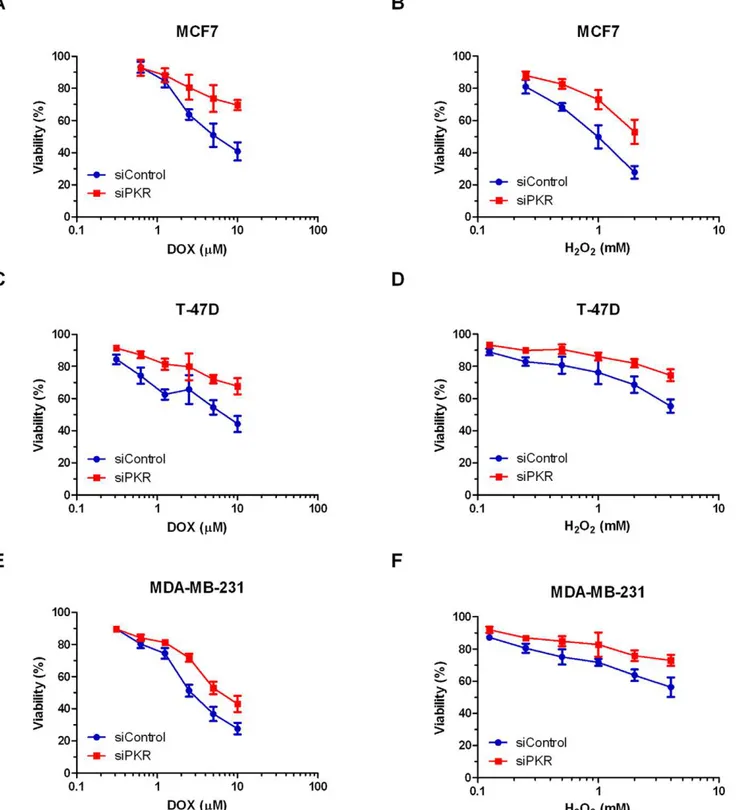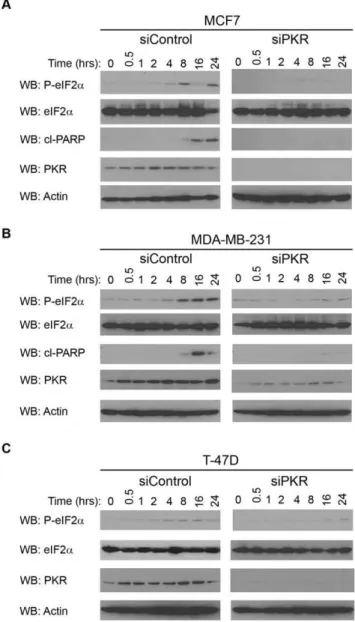Increased expression of the dsRNA-activated protein kinase PKR in breast cancer promotes sensitivity to doxorubicin.
Texto
Imagem




Documentos relacionados
Neste sentido, conclui-se que os alunos atribuíram maior importância a motivos intrínsecos do que extrínsecos para se manterem motivados para as aulas de Educação Física,
Thirty women and one man with a diagnosis of carcinoma of the breast and a positive family history of breast cancer, who were receiving treatment at the Breast Cancer
Recomendável: hidropisia (pronuncia-se hidropizía), conforme consta nos dicionários de português. Hidropsia e hidrópsia, apesar de errôneos, são termos amplamente
Our findings indicate that Brb and Dox, alone and in combination, exhibit antiproliferative effects against human breast cancer T47D and MCF7 cell lines, and this
Silencing of FANCF in breast cancer cell lines led to significantly increased DNA damage compared with the cells treated with control shRNA (Figure 3).. Silencing of FANCF induced
We examined PTPN12 mRNA expression in five breast cancer cell lines using semi- quantitative reverse-transcription PCR, and detected PTPN12 protein expression using
To overcome this hurdle for studying the functional role of Vav1 in human breast cancer, we overexpressed Vav1 in two breast cancer cell lines, AU565 and MCF-7, achieving Vav1
In aggressive breast cancer cell lines, a cell population with high ALDH activity as assessed by the Aldefluor assay has been shown to be enriched in tumorigenic stem/progenitor

